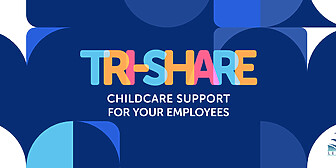The New Economics of Enterprise Technology in an AI World

The following article first appeared in the Our Insights section of McKinsey’s website. It is reposted here with permission.
Enterprise technology spending in the U.S. has been growing by 8% per year on average since 2022.
This surge is not surprising, given the increasing role technology plays in how businesses function and create value.
The issue lies in what companies are getting for that spend, and the track record on that score is mixed.
While analysis linking tech spend to labor productivity is notoriously inexact, labor productivity has grown by close to 2% over the same period of time.
Data further show that the relationship between IT spend levels and labor productivity varies by sector, creating more uncertainty.
The communications, media, and services sector, for example, has sustained growth of greater than 4% in productivity while increasing IT spend by almost 9% per year.
The retail sector, meanwhile, has demonstrated an almost 4% increase in productivity, while seeing IT spend drop more than 1% annually.
Deciding Factor
These trends help illustrate at a macro level why executives are often skeptical about requests for more IT investments within their businesses.
Let’s be clear: Technology is a deciding factor in a company’s ability to compete and, when the strategy and execution are strong, deliver outsize returns.
Our analysis suggests that enterprises with high-performing IT organizations have up to 35% higher revenue growth and 10% higher profit margins than their peers.
The strategic importance of technology on a company’s growth trajectory makes the productivity question one of vital importance not just for the CIO but also for the CEO and CFO.
Bridging the gap between what tech is capable of and how it often falls short requires a much better understanding of the underlying value of tech.
Without that, companies are likely to make low-impact investments and allocations that fund activity but not necessarily value.
While technology has made staggering advances, the understanding of tech economics and tech financial modeling has lagged behind.
Why Now: The Forces of Change
While the quest for better ROI and more accountability on tech spend is a long-standing issue, new innovations and models have profoundly shifted technology spend dynamics.
Cloud adoption and as-a-service models, for example, are shifting large costs from capital expenditures (hardware) to operating expenditures (paying for use).
In fact, some 79% of IT spend now goes to operating expenditures. This shift, along with the growing use of tokens through large language model services, is giving businesses a much clearer understanding of spend at the unit cost level and spurring the growth of financial operations to better manage spend.
The expansion of FinOps enables greater spend automation, faster resource allocations, and more granular budgeting and offers a model for how CIOs and CFOs can manage tech spend broadly.
The changes in how to manage tech spend are matched by shake-ups in established pricing and budgeting practices.
The integration of gen AI into software, for example, is pushing up usage costs (such as cost per prompt), while the promise of gen AI agents is already causing CIOs and chief human resources officers to rethink their talent strategies and spend models (including training and career pathing).
These developments are giving CIOs and CFOs new tools and opportunities to be much more analytical and intentional in making technology investment and allocation decisions.
What’s Holding Back Enterprise Tech
There are dozens of factors that can hinder tech’s ability to improve productivity, but our experience and analysis suggest the following are having the greatest impact:
- Cyber and compliance necessities. The tech costs of doing business in the modern world—that is, operating reliably and responsibly—have increased significantly. Adhering to Europe’s General Data Protection Regulation, for example, has led to a reduction of 1.9% in profit margins within data-intensive (for instance, information and communications and financial services) sectors. The rise in cyberattacks (attacks per organization per week increased 28% in the first quarter of 2024) is forcing businesses to increase security spending by a projected 15% in 2025. Organizations will need to continue to fund these programs.
- Incentives reward tech delivery over business-wide value. The business leaders who pay for IT to develop a product or service are often not accountable for the true costs of developing and maintaining that product or service. In our experience, indirect costs associated with developing a product (for example, cloud or security services or tool licenses) can sometimes account for as much as 80% of the full costs of the product over its lifespan. Similarly, there are few disincentives for building pilots and one-off initiatives over building for scale, leading to a lot of rework and solutions that cannot be broadly applied. This pattern is clear in AI initiatives, where only 1% of company executives describe their gen AI rollouts as “mature” and only 10% to 20% of isolated AI experiments in the past two years scaled to create value. Our analysis of the impact of FinOps programs reveals that this misalignment of incentives leads to poor spend decisions on enterprise technology and results in a 20% to 30% loss of value.
- Tech debt. A focus on point solutions and a lack of clarity on the resulting complexity lead to ever greater cycles of tech debt—essentially the “tax” a company pays to redress technology issues when undertaking new development. Companies pay an additional 10% to 20% to address tech debt on top of the costs of any project, creating a significant drag on productivity.
- Productivity gains go to a variety of stakeholders but not the business. A range of IT programs result in benefits that accrue to others outside of the business. Some 10% to 20% of productivity resulting from work-from-home investments benefits employees rather than the enterprise (such as improved working conditions and freed-up time for personal activities). McKinsey analysis further suggests that 5% to 10% of IT productivity improvements can be lost to vendors (for example, cloud service providers that are no longer passing on the reduction in hardware costs to their customers). Keep in mind, some of these investments may not affect productivity but do improve revenue (for instance, better consumer experience might improve the number of customers, the revenue per customer, and lifetime value).
The common denominator across the last three of these root causes is the lack of transparency and a clear understanding of the economics of modern technology.
By using more accurate economic modeling, CIOs can work with CEOs and CFOs to resolve these issues and boost productivity.
CIOs and executive teams will need to better understand their tech economics to improve returns on investment and address the productivity gap.
Our experience has shown that companies can make four changes to reach that goal.
Move the Technology Estate to a ‘Consumption Metering’ Model
Moving the technology estate to a metered consumption model can allow companies to track and attribute any tech used at a unit cost level.
This transparency helps companies hold teams accountable for total costs and the tech debt they generate, while developing incentives to minimize it.
This aspiration is a challenge for many businesses, which have struggled to track consumption, and companies will need to be thoughtful about how to invest in building up their spend transparency capabilities (for example, better metrics and spend governance).
But models such as FinOps are emerging—a capability for managing cloud consumption costs that tracks the use of cloud services at a unit cost level.
Making this shift requires building all technology services and capabilities as consumable products.
This means establishing standardized APIs to provide people and systems with an easy way to consume each product, a metering capability that tracks every call to a product, an ID and authentication system that allows each call to that given product to be attributed to its end user, and an algorithm for calculating the unit cost of the technology that is used.
Every technology product should have a balance sheet that provides true measurement.
In this way, when an app “consumes” a cyber product to comply with risk standards, that call is tracked.
Every technology product should have a balance sheet that provides true measurement of the tech debt and indirect costs.
One leading financial institution, for example, built an algorithmic model that ingests a variety of data from tools such as asset inventories, code repositories, and ticketing systems and targeted its analyses to automatically profile and size tech debt drivers on a product level.
Creating transparency requires leaders to automate processes and manage tech through continuous integration/continuous delivery.
This is the only realistic way to embed the tracking tags that can allow leaders to review details such as which machines have been allocated and what changes have been made, as well as to automate billing.
AI and gen AI are already starting to have an impact on enabling greater transparency and faster decision-making. AI is making significant changes to FinOps—for example, with its ability to tag, clean up data, create attribution, and develop rules.
In some areas, gen AI is replacing the arduous task of creating dashboards with interactive chat features so users can easily interrogate data and determine patterns.
Run Everything Like a Product—Not Just IT
Over the past five to seven years, IT has been moving to a product operating model. But this shift has largely failed to extend to the rest of the business, despite the tech industry providing a clear model of business-wide product operating models working well.
The shift companies will need to make is to manage all technology initiatives as products run by cross-functional teams. These teams, led by the business, operate with the autonomy, accountability, and incentives to deliver.
Our analysis shows that top companies in product operating model maturity have 60% greater total shareholder returns than companies in the bottom half and a 16% higher operating margin.
When properly established, these product teams own their products completely, including ongoing maintenance and performance. Having these full-cost responsibilities ensures both the accountability and incentives to capture the identified productivity value of each initiative and pay down tech debt.
The scaling practice with the greatest correlation to bottom-line impact is tracking well-defined KPIs.
The most critical role in this product model is the product manager, who is essentially empowered to run the product like a business.
More specifically, they are responsible for developing the financials for the product by accounting for all the direct and indirect costs as well as modeling out demand, revenue, and planned future costs (for example, investments toward eliminating tech debt and re-platforming costs).
Any effective PM should be able to identify and address both the hard and soft costs that counteract productivity, such as the size of the demand, whether outcomes actually deliver value to the business, and what dependencies are required for the product to capture its full value, as well as track KPIs closely.
Our research shows that for gen AI solutions, for example, the scaling practice with the greatest correlation to bottom-line impact is tracking well-defined KPIs.
Go for the Big Value, Not the Small Gains
Tech leaders need to put their resources where they can have the greatest impact. Strong technology economic management practices help shift the decision-making process from traditional heuristic models to more analytically driven ones.
In this way, companies can reduce the “pilot purgatory” of subscale programs and focus on initiatives that can generate meaningful value for the business.
A good starting point is focusing tech investment on domains (that is, an end-to-end process or journey) rather than individual use cases.
In fact, as many as 80% of successful interventions in a struggling digital transformation are based on re-anchoring the scope to drive a concerted effort against a well-defined domain.
A critical role for the CIO is to ensure that work is scoped at a domain level so that all relevant dependencies are accounted for. This expanded focus needs to include change-management practices, too, such as training, continuous improvement, and talent resourcing.
This is the only way companies can capture the full range of value, from faster time to market to better reliability to new value streams.
Within a domain, tech leaders need analytical rigor in sizing the value potential of each use case on their road map. When it comes to using gen AI, for example, McKinsey’s latest AI survey shows that, out of 25 attributes tested, the redesign of workflows has the biggest effect on an organization’s ability to see EBIT impact.
This balance sheet view for all priority initiatives is critical to providing a clear overview of which initiatives are flying and which are flailing. Working with the CEO and CFO, CIOs can set up quarterly reviews to reallocate budgets to products that are hitting their milestones for value (and defund those that aren’t).
Tech leaders need to put their resources where they can have the greatest impact.
This balance sheet view helps underscore a critical insight about enterprise technology investments: The greatest returns happen when technology programs scale. But scale doesn’t just happen; it requires intent and discipline in building an architecture that enables it.
Take building data products. By building a data product with a structure that can easily be extended to new cases, along with a set of standard APIs to connect into systems, the costs of using a data product for each additional use case rapidly decreases.
The benefits of focusing on scale were clear at one international consumer company that was building out data products.
At the point when a data product enabled five use cases, its projected cost was about 30% less than building individual data pipelines for five analytical solutions. When that data product was then scaled to another market, projected costs were about 40% lower when addressing five analytical solutions (versus building individual data pipelines).
This cost reduction stemmed not only from the reuse of the standardized data product but also from the experience that the data product team had accrued.
One critical enabler for scale is the enterprise architect, who designs and manages the infrastructure to enable scale and productivity. For instance, by reviewing a product balance sheet, the EA can prioritize initiatives to reduce high single sign-on as well as identity and access management costs.
Similarly, the EA, in collaboration with the CIO, as well as business and finance leadership, can decide to invest in system upgrades when tech debt costs hit a certain level to start paying the debt down.
It’s daunting to transform or modernize the entire tech stack. Rather, picking a domain and transforming it end to end is the most effective way to move forward.
Rethink Your Talent Model for an AI-First World
The increasing adoption of agentic AI across different parts of IT is opening the door to revolutionary changes in how companies run their technology estates.
Early programs show a 40% to 50% acceleration in tech modernization timelines and a 40% reduction in costs derived from technology debt.
This shift to an agentic AI world could perhaps be even more revolutionary when it comes to tech talent: A fuel-injected talent model has the potential to address previously unsolvable (or prohibitively expensive) business cases and thoroughly reconfigure how IT develops new applications, reduces the cost of doing business, opens new revenue streams, or addresses tech debt.
The increasing adoption of agentic AI across different parts of IT is opening the door to revolutionary changes.
Traditional talent strategies and team configurations will fundamentally change (some roles are likely to absorb new responsibilities), which will result in a complete rethink of enterprise tech resourcing models.
Highly structured HR systems—characterized by tightly drawn roles with well-defined competencies, well-worn career paths, and fixed compensation levels—will need to evolve to meet the more volatile and unpredictable dynamics of gen AI.
The decisions companies make about enterprise technology in the next two years will go a long way to shaping how they perform over the next 10.
The question for CIOs, CEOs, and CFOs will be how to use a deeper understanding of the economics of enterprise technology to move past standard budgeting exercises and shape their companies’ growth trajectory.
About the authors: Aamer Baig is a senior partner in McKinsey’s Chicago office. James Kaplan is a partner in the New York office. Jeffrey Lewis is a senior partner in the New Jersey office. Pablo Prieto is a partner in the Connecticut office.
RELATED
EXPLORE BY CATEGORY
Stay Connected with CBIA News Digests
The latest news and information delivered directly to your inbox.


